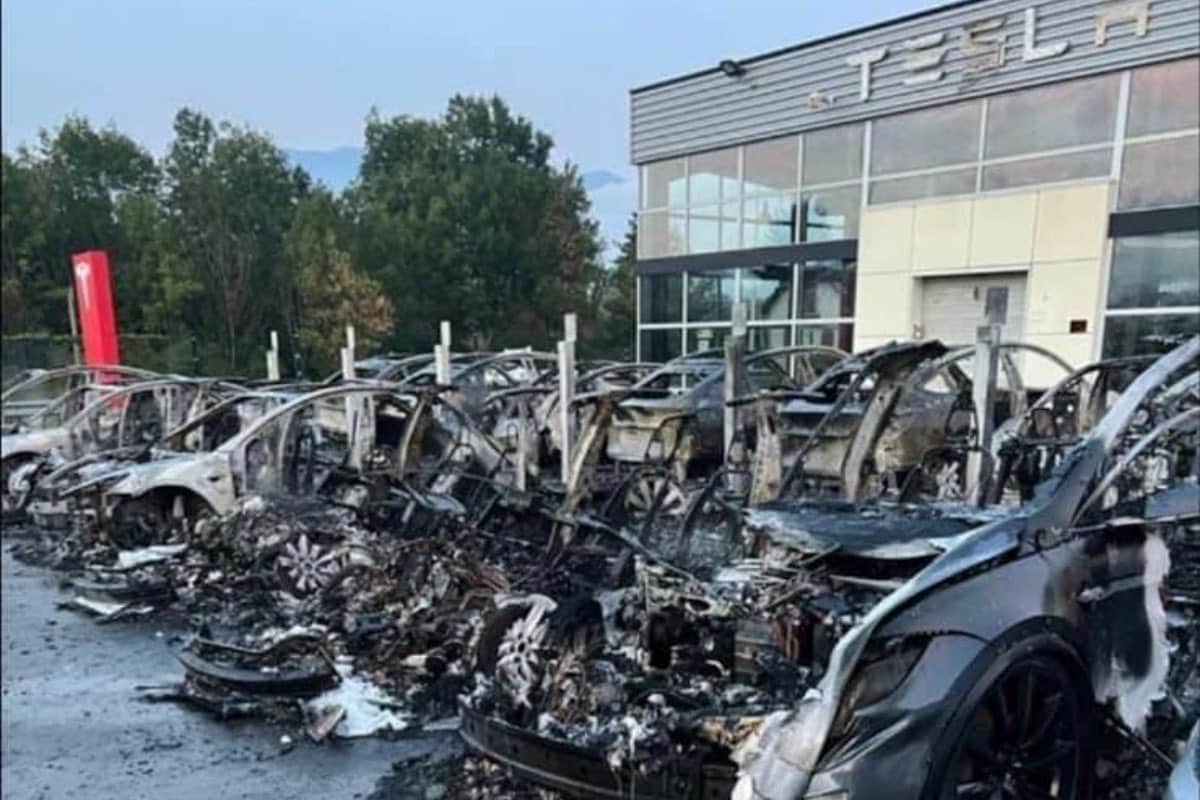14 Teslas catch fire in Savoie

Dark ash-filled weekend for Tesla, which saw a fleet of vehicles go up in smoke at its dealership in Chambéry.
It is often said that trouble, like birds, flies in formation. In 24 hours, Tesla made headlines twice with extensive coverage of burned cars. In both cases, fortunately, no victims were reported.
During the night from Thursday to Friday, Turkish firefighters were called to the Tuzla district in Istanbul to extinguish a truck carrying 6 Tesla Model Y. According to our colleagues at DonanımHaber, the driver reported that the origin of the incident was likely one of the transported Tesla Model Y vehicles. This seems unlikely, as spontaneous fires in a non-charging car are extremely rare.
Savoie after Turkey
On Friday morning, it was in Chignin, Savoie, that firefighters had to intervene to contain a fire in the parking lot of the Tesla Chambéry dealership. The cause of the incident is still unknown, as surveillance footage is still under review. However, a police investigation has been launched with the possibility of criminal intent.
The images of the burned cars inevitably recall those from Frankfurt in early September. A purported environmental group apparently thought it was more clever to set fire to a dealership parking lot of a Tesla. An act of gross stupidity that endangered the lives of residents and firefighters and released a massive amount of toxic pollutants into the atmosphere.
Tesla more exposed, but not more at risk
While everything related to Tesla tends to attract significant media attention, especially in case of bad news, it is important to dispel a persistent myth regarding electric cars and Teslas in particular. No, electric vehicles do not catch fire more often or more easily than gasoline-powered cars. They can ignite for other reasons, like any electrical device, but the outcome is necessarily more dramatic than a toaster!
Several hypotheses can explain such a fire. Once the criminal angle is ruled out, the vehicle’s battery can be damaged during charging or unloading operations, or during transport due to road shocks transmitted from the trailer to the vehicle’s structure. Improper use of charging equipment can also lead to a fire. In Chignin, some of the cars appeared to be charging.
Gasoline will always ignite more easily than a Lithium-Ion battery, so there is no need to fear for the future of automotive electrification. Charging technology is also rapidly improving, both in terms of speed and safety.
This page is translated from the original post "14 Tesla partent en fumée en Savoie" in French.
We also suggestthese articles:
Also read






